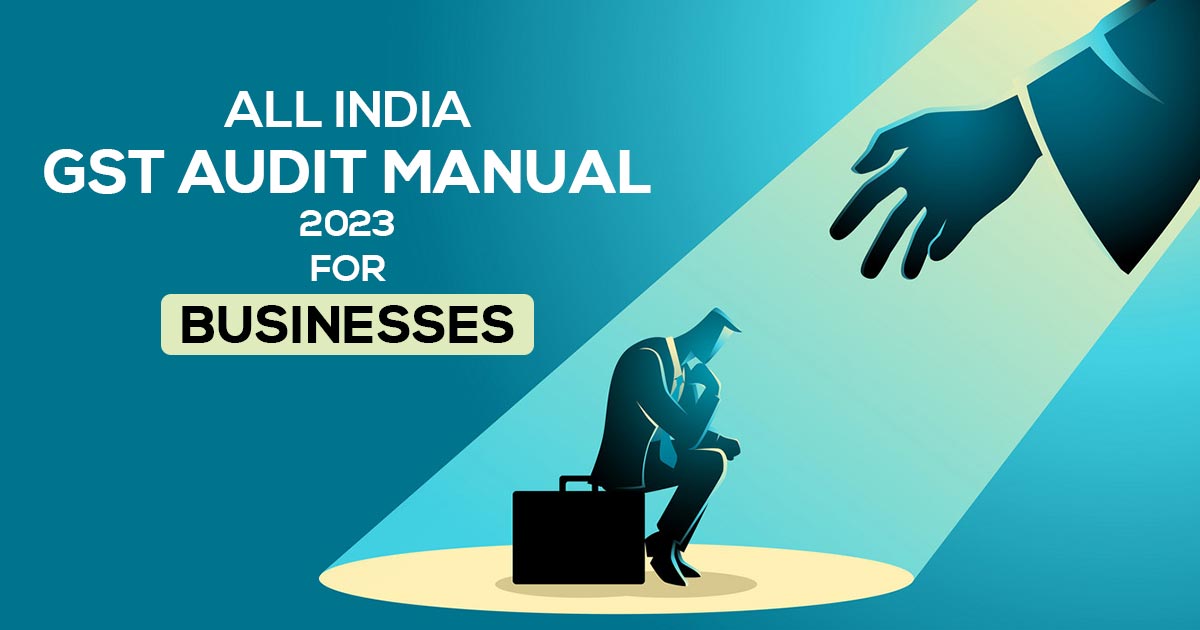
A Model All India GST Audit Manual 2023 has been made for use via the Centre and state tax officials in an action that is anticipated to help companies and decrease litigation.
The manual, which outlines standard guidelines for the selection of audit cases, preparation, and execution of audits, as well as the post-audit follow-up, is anticipated to assist both central and state GST authorities in carrying out the process uniformly, according to sources.
The standards presented to the GST Council in February are expected to be implemented for audit cases beginning this fiscal year.
It has proposed, among other things, a unified platform for exchanging critical audit results and other sources of relevant information in order to increase audit quality and efficiency. It has also advocated for officials’ capacity building and regular training, as well as identifying service areas for targeted training. E-commerce, employment contracts, hospitality, banking, financial services, and hospitality are among the services previously mentioned.
Read Also: Easy Guide to Audit Provisions Under GST with Complete Procedure
At the moment, one of the biggest worries for firms has been the variety of audit methods implemented by the Centre and other states, with each selecting cases established on different criteria and having differing standards and timetables. Audits have also gained steam in recent months, with both the Centre and state GST authorities issuing many letters to taxpayers. Given the emphasis on extending the GST taxpayer base and reducing tax evasion, the audit is projected to be an important tool for tax officials this fiscal year.
All-India Coordination Committee’ of Officers in his action would set up with the officers from the centre and states who opt for the themes in order to conduct the audit, build the committee of the officer towards choosing the assessees in a state to perform a thematic audit and coordinate between distinct heads in order to raise a common min audit plan for the provided theme. The same shall track the actual audits via the field formations and disseminate audit outcomes to the precise stakeholders and execute the additional operations according to the Model All India GST Audit Manual.
According to the document, the guidelines provided in the manual are intended to enable audit officers to conduct effective audits in a uniform, efficient, and comprehensive manner, adopting the best practices of the States and the Centre, as well as international practices. The audit processes are also aided by technological tools developed by the Centre and state governments.
The audit manual serves as a guide for both the auditing team and the taxpayers, according to experts. It is a thorough document with many legislative requirements and can aid taxpayers in determining the papers that may be needed during the audit. Because the fundamental preparation may be done proactively before the team comes, such an approach would result in time savings for both the visiting audit team and the taxpayer.
Suggesting the constant procedure for the selection of the audit cases the manual recommends a weightage-based criteria that the assessee filing Form GSTR- 3B and Form GSTR-1 are opted. Acknowledgement of secondary data sources like data from other indirect levies or income tax. The weightage of every parameter might depend on its importance in choosing the assessee for the audit and the significance of the risk parameters that have been opted for in the former fiscal year.
As per the average weight acknowledging all the parameters then a final score. The ultimate decision on which taxpayers will undergo an audit may be made using the final score’s descending order. Additionally, a committee should be formed to determine different risk characteristics for audit selection, and certain instances can be chosen at random or based on local parameters like intelligence inputs and prior conduct.
Towards the follow-up audits, it added that when the tax, interest, penalty or any additional amount liable to be paid via the registered assessee as specified as short paid or not paid does not deposit in 30 days post to the issuance of the final audit report the case is needed to be directed to the jurisdiction and the case might have opted for the execution of the demand and recovery proceedings.